What is a Webinar & How does it Work? Full 2025 Guide
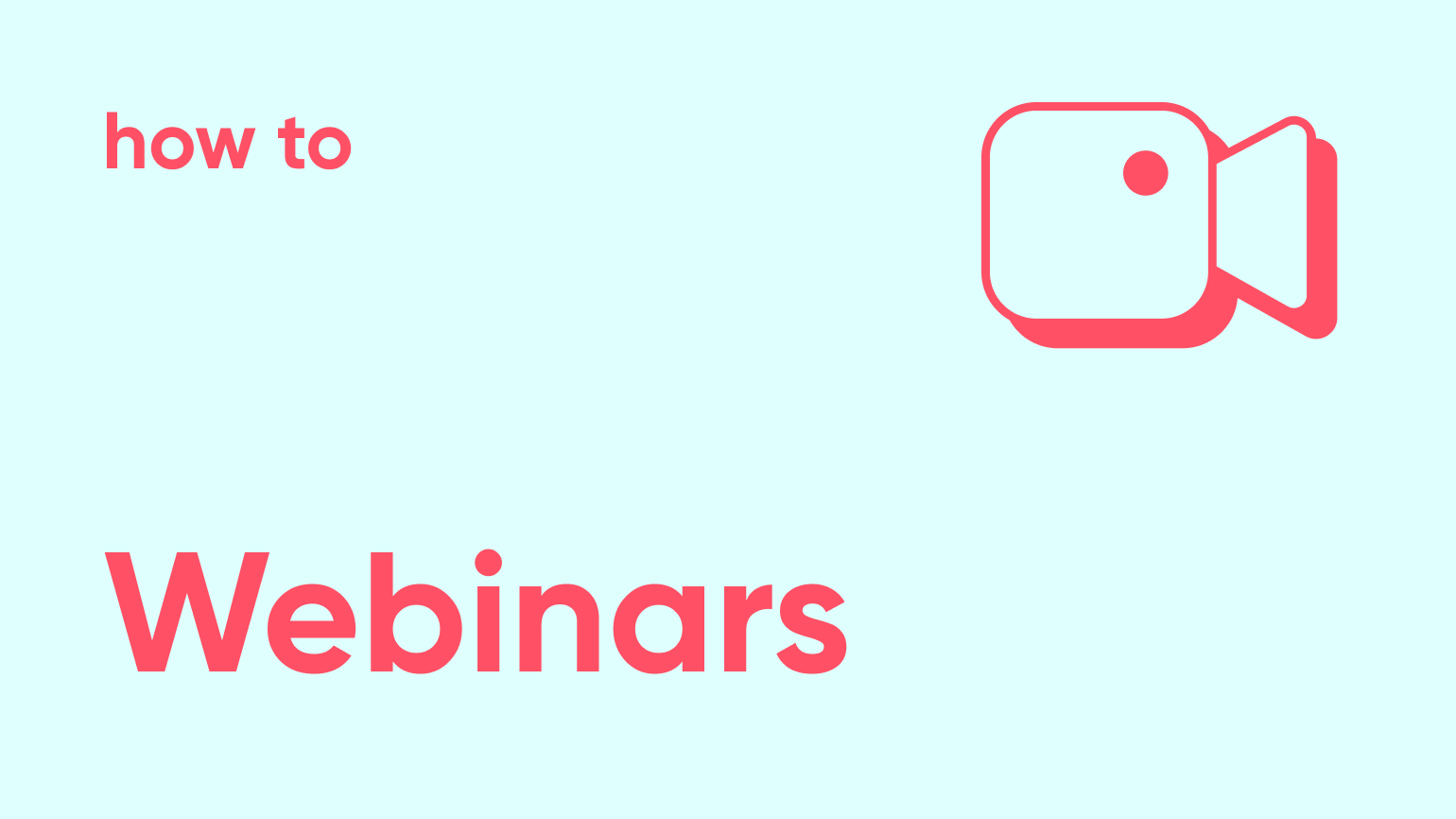
Everyone is watching more video content. That means your prospects, leads, and clients, too. So businesses have to keep up: 91% of businesses use video as a marketing tool.
Webinars are a form of live video content with a lot of potential for interacting with your audience: increasing brand awareness, engaging viewers to turn them into leads, and converting leads into customers.
This article will cover everything you need to get started with webinars: what they are, why you should host them, how to successfully plan and host one, and more.
Let's dive right in.
What is a Webinar?
Webinars (short for web-based seminar) are real-time video presentations, workshops, or lectures hosted using a webinar platform.
Business-related webinars are often lead generation, authority-building, or trust-building tactics — but can serve any business purpose such as onboarding new customers, training employees internally, and more.
Webinars are a great format for businesses because of the ability to provide high-quality personalized experiences at scale: hundreds or thousands of people can register and attend the webinar live. They are much more scalable than in-person events and a lot easier to organize. No need to pay for a venue, flights, hotels — a webinar platform and a laptop are enough.
Another bonus to webinars is that they create tons of content the business can use to keep engaging and educating their audience even after the live webinar is done. Notably, this can be done by using on-demand or by repurposing the webinar (more on that later).

Run Modern Webinars to Engage your Audience
Start for free with up to 30 registrants. No credit card needed.
Start for freeHow Does a Webinar Work?
Webinars can be accessed live, or made available on-demand.
There are 3 main parts to hosting a webinar:
- Using a webinar platform, someone will create the webinar. They will set a date, time, give it a name & description. Most tools will automatically create a registration page, so people can sign up for your webinar and access the content.
- The host is the person in charge of running (and sometimes moderating) the webinar: they make sure your webinar's content is engaging, interactive, and full of relevant value to the business' audience. They will invite guest speakers, write the webinar script, host Q&A sessions, and ensure the session is on-pace — all this to make your session as informative and interactive as possible.
- Viewers can register to an upcoming webinar on the dedicated landing page. They will get an invitation in their calendar and reminder emails before the session goes live.
By showing up when the session live, attendees can interact with the hosts, guests, and other attendees through the chat, or use other interactive features such as Q&A or polls.
Attendees can also access the webinar's replay on-demand to watch back their favorite moments or share it with their colleagues.
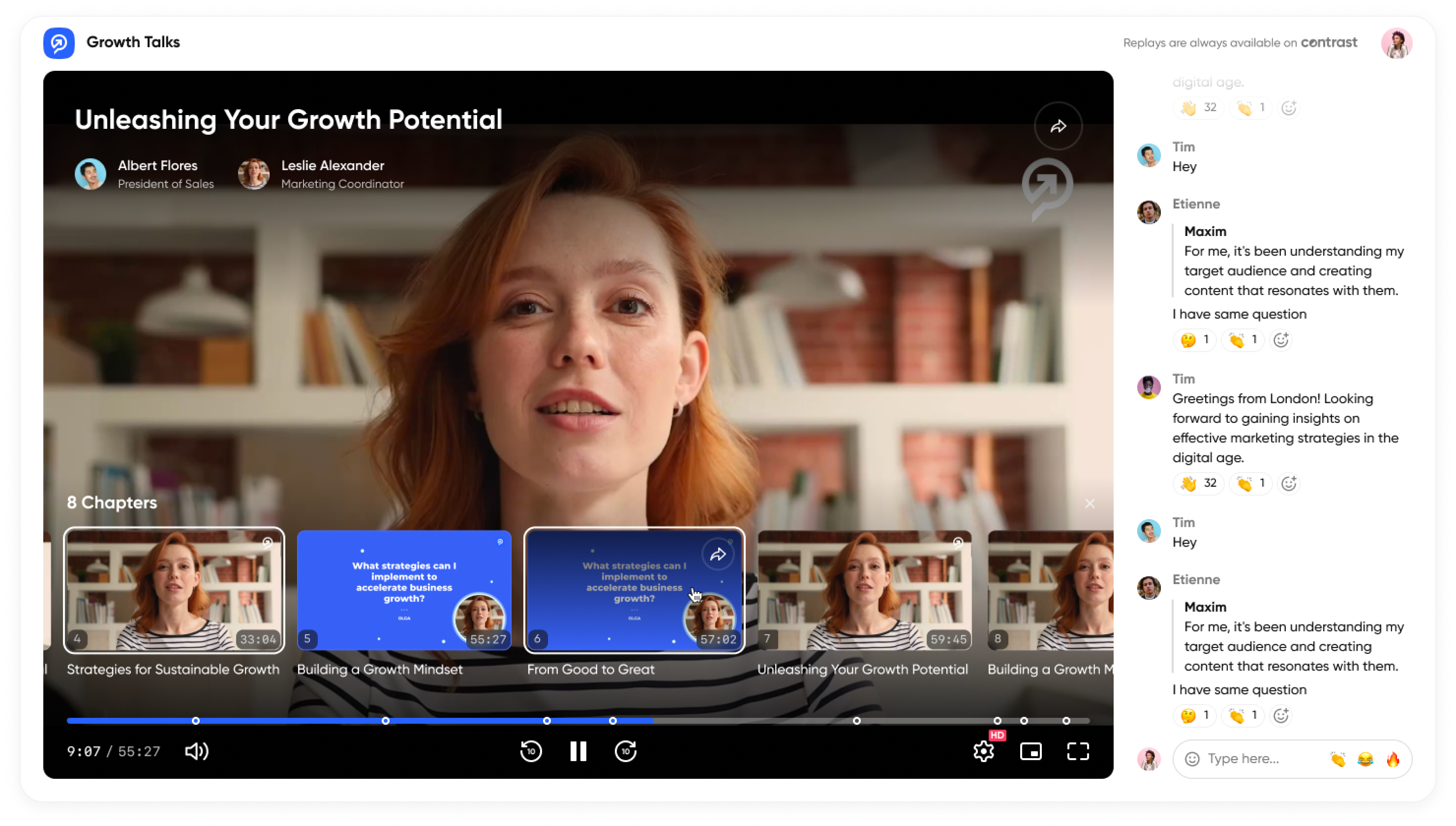
Make sure you choose a webinar platform built for interactivity to provide attendees with the most modern experience possible.
What are the Benefits of Hosting Webinars?
Now that you understand these 3 main parts of hosting a webinar, let's look into why you should consider hosting a webinar of your own.
These are the main reasons you should be hosting webinars:
Establish your Expertise
The #1 reason you want to be hosting webinars is to show your audience that you have expertise about a specific topic — webinars are a great element to add to your demand generation strategy. You want to establish yourself as an authority in your market and be the go-to source for information about your industry.
Webinars are a great format to not only show that you have expertise about specific problems your audience are facing, but also show that you have a solution. Once you build this trusting relationship with actors in your industry, you will be top-of-mind and the go-to solution for anyone facing this issue.
Showcase your Solution
Once you've established this preliminary trust with your audience, webinars are also a great way of showing your product to a group of interested people.
Product demo webinars are the opportunity to have one of your product experts show the main features of your product, how they fit together to solve the problems mentioned previously, making sure that prospects understand the value of your product.
But these webinars aren't limited to potential clients, product demo webinars can be used to educate current customers, inform users of new feature releases, or even used as training sessions for more complex features.
The use of interactive features during these webinars make for a better viewing experience: polls allow the host to gather information about the audience and Q&As allow the product expert to take chat messages and answer them in real-time.
Create Valuable Content
All your webinar content should be recorded, and if your webinar platform does not automatically record your webinars: choose one that does.
How often do you get to have an industry expert agree to a 1-hour interview where they will share their knowledge, anecdotes, personal experiences, and answer questions? Let me guess, not very often. But — invite them to a webinar — and they might just say yes.
Webinars are a goldmine for content. They make for great Hub content in the Hub and Spoke model. An hour-long webinar can easily be repurposed into 4-5 short clips, a blog article, a newsletter, 4-5 social posts, an FAQ, and more! With the right tools and techniques (and a little AI), you can easily extract 10+ pieces of content from each webinar.
All of these shorter pieces of content can be used to keep driving more people to your webinar replay: increasing engagement and building out your lead list.
High-Quality Lead Generation
Marketers generally agree to say that webinar lead generation results in some of the highest quality leads.
You will get information about every person who registers to your webinar: their name, email — you can even ask for their company name or phone number. All these registrants can be added to your list of audience members (using integrations or CSV exports).
Not only do you get information about these people, but you also have pre-qualified them: you know they are interested in the topic of the webinar. And if they show up, that's an even stronger signal that they are interested.
The best webinar platforms will provide you with detailed webinar analytics such as whether they attended the session live, if they watched the replay, and how long they watched (watch time). You can also get information about engagement: chat messages sent, poll answers, etc.
All this information makes it easy to outreach these warm leads, who are interested in your niche, product, or industry — with relevant messaging.
Support Marketing Team's Efforts
Marketing is all about engaging with your audience, prospects, and customers — and webinars can support efforts all through the funnel.
91% of B2B professionals say webinars are their preferred type of content. Paired with the 1-to-many aspect of webinars, this makes them a no-brainer for any marketing team.
Modern webinar platforms help marketers build thought-leadership through innovative and entertaining experiences, while helping generate a ton of value for content teams to redistribute unique and authentic content through different formats.
Increase Brand Awareness
Most businesses struggle with getting their brand out there, and webinars can be a powerful solution to this predicament.
Running branded webinars allows you to associate the authority and trust of the content directly with your brand. This will increase brand awareness and recognition for relevant people in your industry.
However, this can also be a double-edged sword. Make sure your content is on-brand, up to par with your brand's expectations, or you might disappoint your audience and create a negative brand experience.

Customer Education and Onboarding
Closing a new customer might be considered the "hard part" but the job isn't done until the customer is up & running and successful with your product.
Customer onboarding webinars are an excellent way of helping your customer success reps engage with new (and existing) customers. They can guide them through the more difficult features towards your products "aha-moment".
Creating an interactive (and fun) experience for client onboarding will not only help with information recall, but also positively impact the way they see your product and brand — increasing word-of-mouth and retention in the long run.
You can also embed the webinar on your website (or in your product) to make it available on-demand for all your users.
Improve Internal Communication and Training
We've talked a lot about how webinars can help you communicate and build trust with the outside world. But as organizations scale and teams get bigger, webinars can be used to improve communication between and amongst teams (and this is particularly true with the rise of remote work).
Webinars are a much more efficient way of communicating than 1:1 training or onboarding sessions, while providing a fun and human-centric experience. Would you rather watch a video of someone or read a long piece of text? I know what I'd prefer.
Onboarding and training webinars can also be used on-demand increasing capabilities and reducing ramp time for new employees.
Here's what Luuk de Jonge, Product Marketing Manager at Contrast has to say about webinars:
"We're a webinar platform. Obviously, we have to run webinars.
But they've become a fun and authentic way to engage with our audience. We always have a fun time interacting with them during our live sessions, building strong relationships and trust.
Webinars are a great way to get an expert to hop on a call for an hour with us and dish our some wisdom. We can then take that content and repurpose it into a month's worth of content in a few clicks with repurpose Ai."
Types of Webinars
There are tons of different webinar types and formats, all with different and unique purposes and advantages. Make sure you pick the right format depending on your webinar's goal.
Here are a few of the most common webinar formats and content types:
Webinar Formats
The webinar category must be chosen before the content of the webinar is decided as it will impact what kind of content is used:
Live Webinar
Live webinars are presentations, workshops, panel discussions, or other formats that take place in real-time and are broadcast to an audience. These are the most engaging, authentic, and entertaining formats as the audience can interact with the host, guest, and impact the rest of the webinar with questions or poll answers.
On-demand Webinars
On-demand webinars are usually replays of webinars that viewers can access at any time. They help businesses increase the ROI of their webinars by extending the life of a webinar past the live, so it can keep generating leads, building thought leadership, and contributing to revenue.
Paid Webinars
Some businesses run paid webinars instead of giving away their expertise for free — some businesses are even entirely built around this model. The registration page includes a payment gateway (using Stripe for example) so attendees can pay for their seat to access the webinar's content.
Paid webinars can be live or on-demand.
Recurring Webinars
Recurring webinars are are online events or webinars that are scheduled to occur at predetermined intervals. It is common that you find events or webinars to take place daily, weekly or monthly. In most cases, these webinars or events follow a consistent format.
These webinars can cover a wide variety of topics: product demos, onboarding sessions, training sessions, or others.
Evergreen Webinars
Evergreen webinars are timeless on-demand webinars. They are always relevant, no matter when they were made. Topics tied to current news, statistics, trends, or reports are unsuitable, as their relevance is fleeting and likely to evolve shortly. Evergreen webinars are best when they include content that maintains its value over time.
Webinar Content Types
Once you have decided on your format you can decide what kind of content you're going to put in your webinar:
Live video
Showing live video during your webinar is a great way to build trust with your audience. In an age of AI and fake content, live video is pretty much impossible to fake. Make sure you have a nice, tidy background and turn your camera on to show the "human side" of your business.
Pro tip: Even if you're going to share slides, videos, or other assets, you can start the first few minutes of the webinar with just a facecam view to make your content more approachable.
Slideshow
Presenting a slideshow is great way to structure your webinar and provide some supporting visuals to help educate your audience on the topic. Make sure you don't have too many slides or too much text on them or you might lose your audience.
Pro tip: Many webinar tools will make you upload slides as a PDF format, so you will lose any transitions or animations that you put in your slides. Either decide that you're ok with not having them or instead share your screen to present the slides.
Screen Sharing
Probably the most common webinar content type, screen sharing is very versatile and gives you control over what you want to show during your webinar. For example, if you run a product demo you can share you screen to walk your audience through the tool step-by-step while providing commentary. This can also be useful for onboarding sessions, as audience members will be able to follow along and see where you are clicking.
As mentioned above you can also use screen sharing to share slides or presentations and include animations. At Contrast we like to use FigJam (from Figma) boards that we prepare for the webinar ahead of time instead of slides. They give a much more fluid feel to the webinar, give visual hierarchy to the information, and makes for a nice asset to share post-webinar.
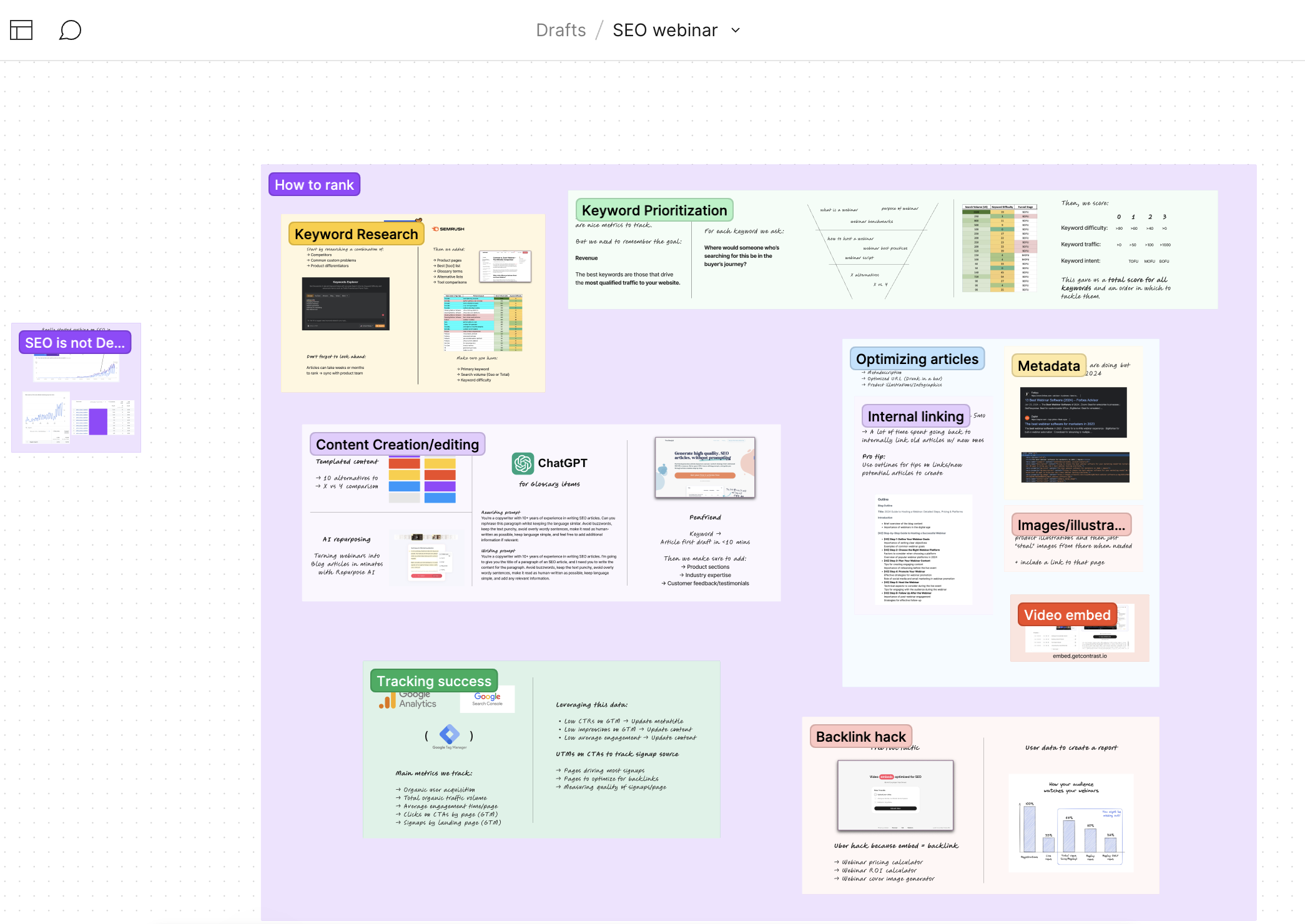
Pro tip: Make sure to prepare what you are going to screen share ahead of time so you don't make too many mistakes doing it live. If what you have to share is complex, consider recording it and using it as a video asset that you can comment instead of sharing your screen.
Webinar chat
The webinar chat is the #1 way of creating a bidirectional interaction with the audience and will be the main way they will have of communicating with the moderator, host, or guest speakers.
Viewers will use the chat to ask questions, interact with each other, and start building a relationship with the people hosting the webinar.
Pro tip: Make sure you acknowledge chat messages so that the audience feels seen & heard — this will increase audience engagement. Try to recognize people who show up often and call them out!
Pre-recorded Video
Sometimes a set of slides or a screen share isn't going to cut it — maybe what you need to show is too complicated or it needs some editing (blurring out information for example). For these cases, using a pre-recorded video as an asset during your webinar can be a great solution.
You can also use pre-recorded videos to deal with availability issues, for example pre-recording a speaker's intervention or playing a customer testimonial even though they couldn't make it to the webinar live.
Pro tip: You can go as far as to record the whole webinar in advance and just play it — however we only recommend this for very specific use cases as people will not be fooled: they will know it's a fake live. For most use cases we would recommend using a high-quality replay instead. Honesty is the best policy.
Polls
Running a live poll during your webinar is a great way to learn more about your audience. Data suggests the best webinar hosts run a poll every 30 minutes, or on average 2 per hour webinar. You can use polls to ask the audience how they're feeling, what other topics they're interested in, or even asking them if they'd be interested in a demo of your product.
Pro tip: Show the poll results live on-screen during the webinar and discuss the results. This will give the audience the impression they are impacting what's to come with their vote and will increase completion rates of your polls.


Create a Modern Webinar Experience for your Viewers
Start for free with up to 30 registrants. No credit card needed.
Start for freeHow to Plan a Successful Webinar
There's a lot that goes into planning a successful webinar, and that can turn it into quite the stressful ordeal. But don't worry, we've got you covered.
We'll cover how to create the backbone of your webinar — A-Z:
- Identify your target audience
- Choose a webinar topic that will resonate with them
- Watch other webinars about similar topics
- Define your goals and objectives
- Pick your webinar format
- Choose a webinar platform
- Assign roles to your team
- Invite your guest speakers
- Create your webinar's assets
- Create an action plan
Let's dive right in:
1. Define your objective and goals
Why do you want to run a webinar? What's the purpose of the webinar going to be?
Lead generation for your sales team? Onboarding new customers? Establish your company as a thought-leader in your industry? Interveiw subject matter experts?
Webinars can serve pretty much any purpose, so you have to be very clear about it before getting started.
Once you've determined what the objective is, you can set goals. We recommend SMART (Specific, Measurable, Achievable, Relevant, and Time-bound) goals:
- Specific means your goal should be clear and precise, so you know exactly what you're aiming for. Instead of saying, "I want a lot of registrants for my webinar" specify the goal to something like, "I want 300 people to register to my webinar"
- Measurable criteria allow you to track your progress. For the webinar goal, it's easy to measure the number of registrants in your webinar dashboard.
- Achievable means setting realistic goals that you're capable of accomplishing. It's about finding the balance between challenging yourself and not setting yourself up for failure.
- Relevant ensures that your goal matters to you and aligns with your other business objectives. It's about making sure the goal is worth your time and effort.
- Time-bound adds a deadline, creating urgency and helping you focus. For example, aiming to achieve those 300 registrants for your next webinar in 2 weeks.
2. Identify your target audience
Now that you know what the goal and objective are, and before you even start to think about content types, content formats, evergreen webinars or anything else, you first need to think about is identifying your target audience.
Identifying your target audience means figuring out:
- Who they are
- What they're interested in
- Where they spend their time
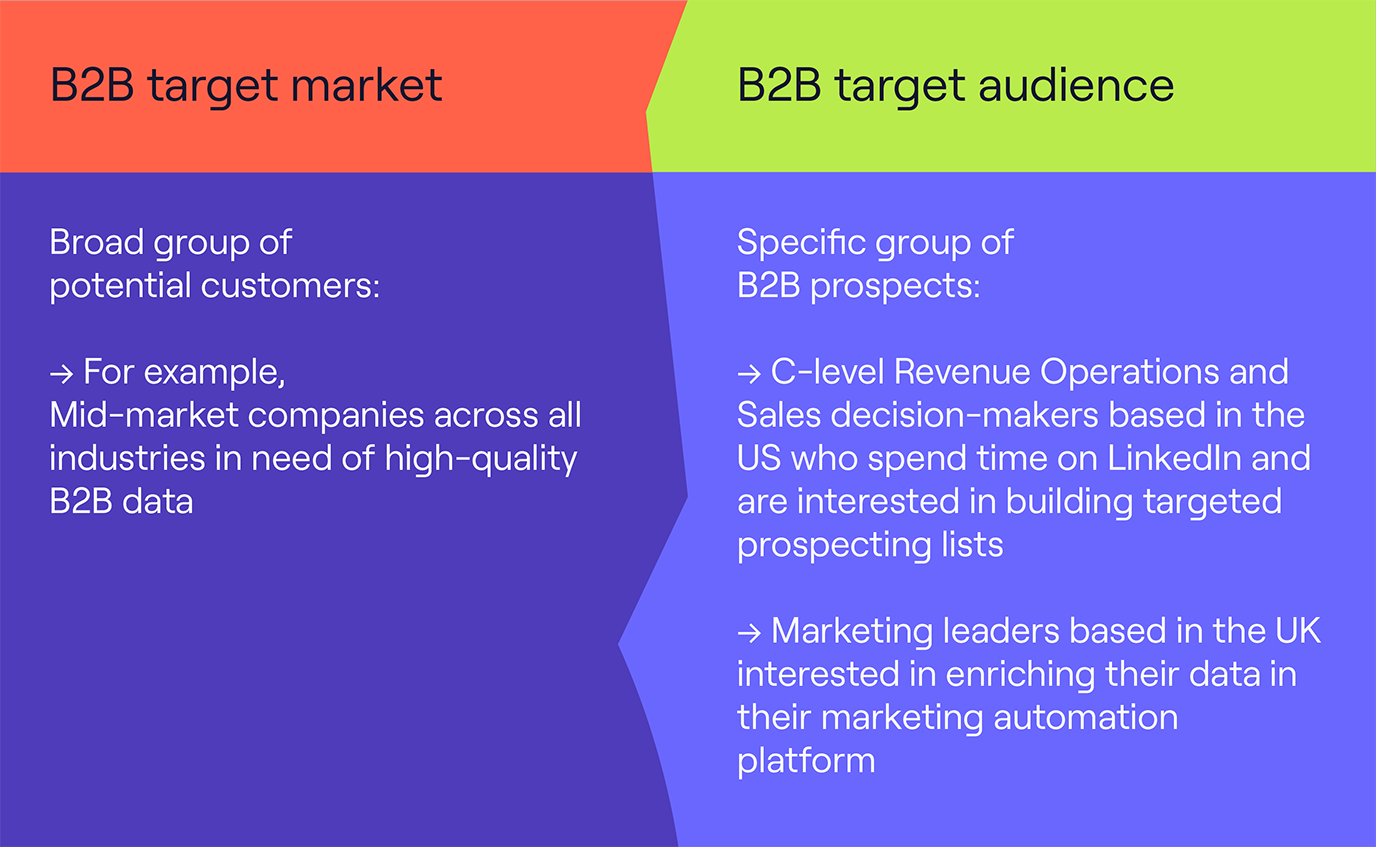
Once this step is done, it will be infinitely easier to determine everything else that you need to know about your webinar:
- What problems keep them up at night that they want to solve
- Where are they based (timezone) to decide date & time?
- What format would they be most interested in?
- What kind of guest speakers would make them show up?
- Where should you be promoting your webinar to get signups?
3. Choose a webinar topic that will resonate with them
Now that you know who you are going to talk to, it should be a lot easier to decide what the webinar topic is going to be. Starting from the webinar goals and objectives, and taking into account information about your target audience, what information can you share with them that they might be interested in?
There are infinitely many webinar topics to choose form, but here are some ideas for finding webinar topics for your target audience:
- Find topics they resonate with on your social media
- Look at webinars your competitors are running
- Analyze industry-specific information or data you have
- Repurpose your most successful blog posts or articles
- What speakers do my audience love & find their topics
Whatever your webinar topic — make sure you're specific about it. You've heard it before: riches are in the niches. For webinars, it's the same: engagement is in the specificity. Remember to use numbers to hook the audience members.
Pro tip: Dispel any objections your audience might have straight away by using "without":
Get 10x more content from your webinars with AI, without spending more time.
4. Watch other webinars about similar topics
So you know why you're running the webinar, who the webinar is for, and you have an idea of what the webinar is going to be about. Now it's time to look for some inspiration.
Watching webinars by other actors in the industry can give you a lot of insights into what kind of content works, what people are generally interested in, who the main influencers are (recurring guests across webinars). Take notes of what they do well (and what they do poorly) so you can implement it during your own webinars.
Pro tip: Look for blog posts, social media content, YouTube videos, and other content formats to take inspiration from for your webinar. These will all help structuring your content and making sure it's understandable by your audience.
5. Pick your webinar format and content type
A lot of guides will suggest choosing whether you want your webinar to be live, on-demand, or another format. But whatever you choose — you'd be missing out on ~50% of views. So do both.
Live webinars will be the optimal setup for maximising engagement with the audience: taking questions, starting polls, sharing ideas, allowing for networking.
On-demand webinars will help you maximize the views and leads generated: making the webinar accessible whenever your audience would like, allowing them to go back, rewatch their favorite parts, share with colleagues, and more.
Modern webinar platforms will automatically turn your live webinar and make it available on-demand to help you maximize views.
Then, you need to decide on the content type. Your research (4) should help inform your decision but this is up to you. Have amazing guest speakers? Host a panel discussion. Running a product demo? Screen sharing and some pre-recorded video assets will probably do.
Pro tip: Whatever the format you decide to run with, consider how you can make the webinar more engaging and interactive by making it more fun and authentic.
6. Choose a webinar platform
Choosing the best webinar platform for your needs is an important part of running a webinar and can impact how successful your webinar is. Modern platforms will make your content feel more professional and will leave a lasting impression on your audience.
Some of the factors to consider when choosing a platform:
- How many attendees are you expecting?
- Does the platform's pricing fit your budget?
- Does the platform let you customize with your brand?
- Can you send automated reminders/follow-up emails?
- How many team members and/or speakers can you invite?
- Does the platform give you detailed analytics on registrants/attendees?
- Does the platform integrate with the other tools you use (eg. HubSpot)?
- How easy is the platform to use? Do they have a free plan/trial to test it out?
- What do the online reviews say?
We might be a little biased, but we'd recommend Contrast — the best webinar platform for companies of all sizes. It's the easiest tool to set up, promote, run, analyze, and repurpose amazing webinars that your audience will love.
Here's what Aurélien from Numeral has to say about Contrast:
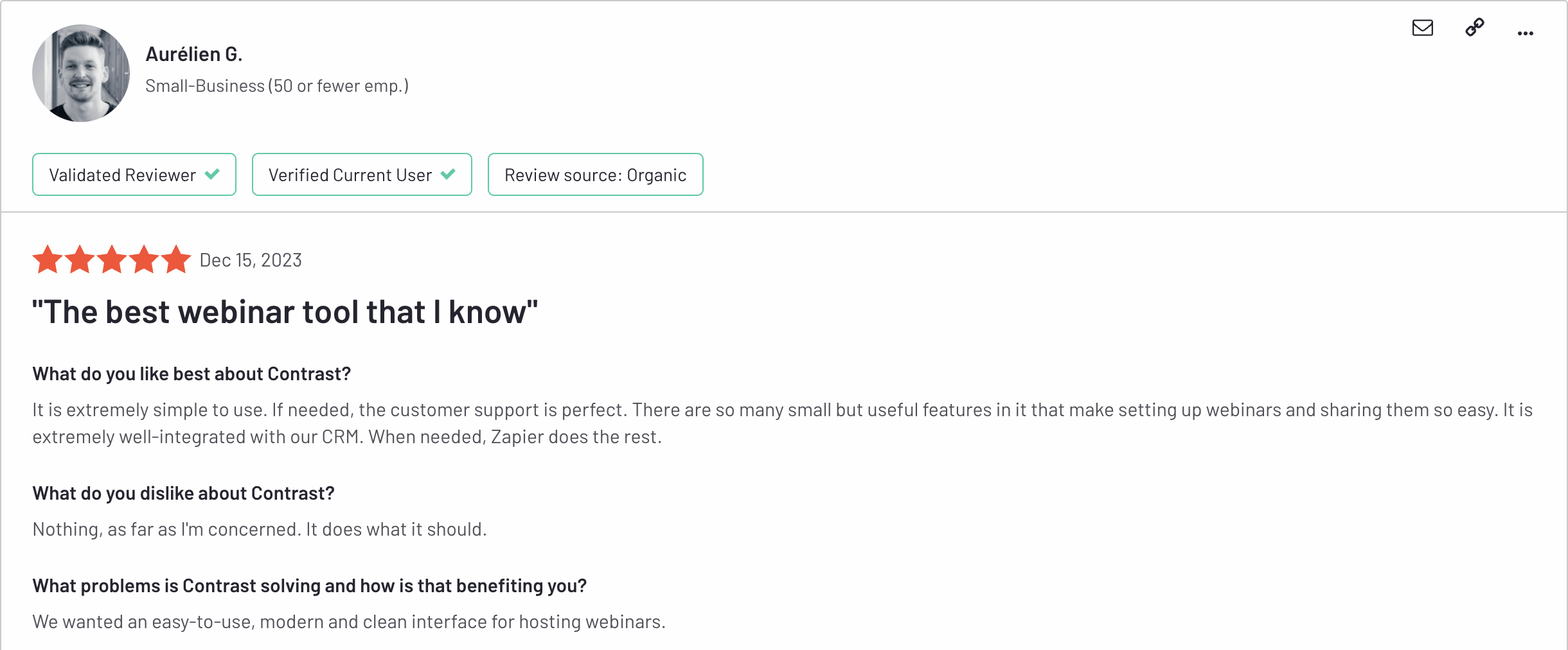
7. Assign roles to your team
Webinars are a team sport — they're pretty much impossible to run on your own. Hopefully your webinar platform has unlimited seats so you can invite your whole team to collaborate.
We've talked about a few different roles already but let's cover them in more detail:
Webinar host
It's the webinar host's job to make sure that both the guest speakers invited to your webinar and of course the attendees have the best possible experience. People that attend the webinar, will often see the webinar host as the face of the company.
It's the webinar's host their job to create engaging conversations and enable the guest speaker to focus on what to say. This way they make sure that the audience gets the most value out of the webinar possible.
Reponsibilities of the host:
- Settings the agenda with the speakers
- Creating the slide deck and other visuals
- Run a test event to make sure everything is ok
- Engage the audience during the webinar
- Repurpose the best parts of the webinar
Pro tip: The choice of the host is an important factor in the success of the webinar. Pick someone with subject matter expertise, that is a good public speaker, and has good charisma. Bonus points if they perform well under pressure.
Webinar moderator
For smaller webinars, the host can be the same person as the moderator. But for 100+ attendees we recommend having a dedicated moderator.
The moderator will be the person interacting with the chat, using the webinar platform's interactivity features (polls, Q&A, etc.), and making sure the webinar is on-pace.
Depending on the size of your team you might even have people who can help you create the content and assets, or help with promoting the webinar.
Pro tip: Consider having a backup host in case your host gets sick!
8. Invite your guest speakers
The speakers (just like the host) are one of the most important parts of a webinar as they set the tone but also bring their expertise to the webinar.
There are 3 main aspects to consider when picking a guest speaker:
- Subject matter expertise: You want a guest speaker that will be capable of talking about the topic of your webinar for a substantial amount of time, with assurance, and expertise. The expertise of the speaker will transfer in part to your company.
- Public speaking skills: Your speaker can be as knowledgeable as you'd like — if they suck at speaking and keeping the audience engaged, you're not going to have a successful webinar. Prefer speakers who have previous experience talking to crowds or on webinars.
- Pre-existing audience: A great speaker will not only know how to talk about a topic (and talk about it well) but will also be able to bring some new audience to your webinar because they will want to hear the guest speak.
Pro tip: Topical influencers make for good guests as they often have a combination of the 3 traits that make a good guest speaker.
9. Create your webinar's assets
We're almost there. Now we need to start preparing the content. This section will depend a lot on the type of webinar you are hosting, but make sure you have at least these:
Webinar title
The webinar title is probably the most important asset for your webinar, as most people will decide solely from the webinar title if they will register or not to your webinar.
Some tips for writing a good webinar title:
1. Include the keyword of your webinar
2. Speak to your audience's pains or wants
3. Be clear about the outcome of the webinar
4. Good writing
5. Tone of voice
Pro tip: Remember that the title of your webinar only has one function. and that is to get the person to read the description of your webinar. What's the purpose of the description? Get them to register.
Webinar cover image
The cover image will be the second asset someone will see when deciding whether or not to register to your webinar — so make sure it stands out.
A good cover image will include:
- Guest speaker's pictures
- Date and time of webinar
- Webinar title
And remember to use your brand colors and identity.
Webinar script/outline
Depending on how confident the host and the guests are, maybe you don't need a webinar script.
However, determining at least a rough outline will be beneficial for both the host, guest, and audience. Remember, overprepare and you'll lose the authenticity of the webinar, but underprepare and you'll be jumping from topic to topic without a goal and you might lose the audience.
Guest speaker questions
No matter what type of event you are going to run, make sure you have some questions for your guest speaker. A few introductory questions to help the speaker present themselves and then some closing questions at least.
Webinar presentation
A powerpoint, figma file, Prezi document, make sure you work with the guest speaker to have a main supporting document for the webinar. Remember to hook the audience at the beginning with the promise of a payoff and keep some space for engaging with the audience. Your presentation can either be a support or a crutch — you decide.
Pro tip: When planning the webinar make sure to build it specifically around audience engagement. How will you break the ice? Will there be a Q&A section and when? Will you take audience questions during the presentation? How will you use polls to keep the audience interested?
10. Create an action plan
Even before the webinar starts it's worth considering the post-webinar workflow.
- Where are we going to find the webinar analytics?
- How are we going to get feedback from the audience?
- How will we use this feedback to improve the next webinar?
- How are we going to repurpose the webinar content?
- How are we going to follow up with registrants?
Pro tip: Consider sending a post-webinar survey to get feedback from the audience on what they liked, didn't like, so you can adapt your next webinars and keep improving.


Modern Webinars your Audience will Love
Start for free with up to 30 registrants. No credit card needed.
Start for freeHow to Run a Webinar: Step-by-Step Guide
So you've just finished planning your webinar, not it's time to actually create the webinar, schedule it in your webinar tool, and run it.
Let's cover all the different steps:
- Decide on a date and time
- Create a registration page and form
- Set up reminder emails
- Share assets with speakers
- Promote your webinar
- Practice using your webinar tool
- Test your equipment
Here we go:
1. Decide on a date and time
The first step to running your webinar is to finalize the date & time of your webinar. Discuss with your team and guest and find a time that works for everyone (and block it in their calendars).
What's the best time and day to run a webinar? There's not one-size-fits-all answer. It depends on your audience and their timezone.
Our research suggests that the best time to host a webinar is 12PM and 2PM in the attendee's local timezone with an average attendance rate of 45-50%.
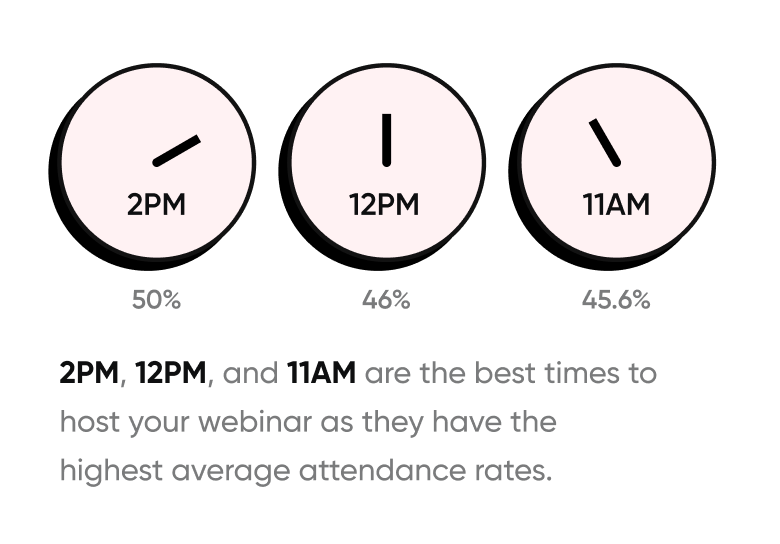
What about the day of the week? Thursdays are the best days of the week to host a live webinar if you're optimizing for attendance rates (on average 41.5%).
Wednesday and Friday being second best. Mondays comes in close third.
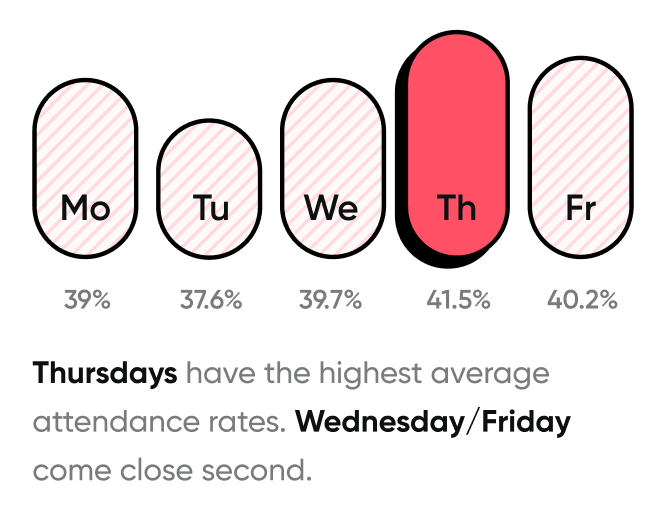
Wondering how long your webinar should be? Most webinars default to 60 minutes, but our data shows
2. Create a registration page and form
Now you've decided on a date & time it's time to actually create the webinar in your webinar software.
Because you've been following this guide to a T, you already have all the assets you need to create a page (title, cover image, description, etc.). It should only take you a few minutes to create the event (if not — you should consider switching to Contrast).
Most webinar tools will automatically create a registration page when you create a new webinar. You can customize this page from the webinar settings. You can also customize the fields in the registration form to ask for company name, website, phone number, or any other custom property to qualify your audience and help will follow-ups.
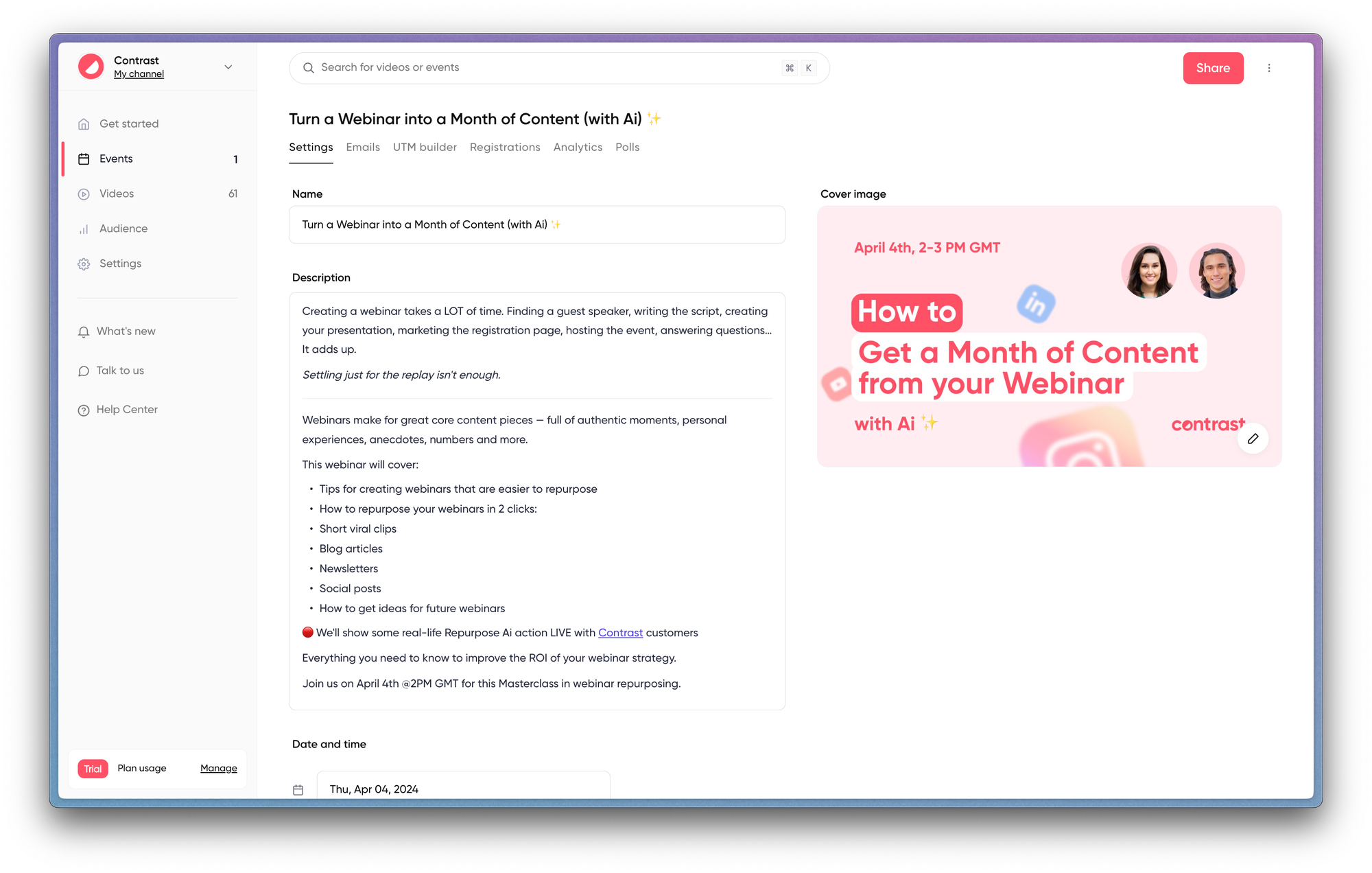
You can also make your own registration page for your webinar and host it on your website. Then, using integrations (HubSpot, Zapier, Make, or APIs), connect it to the webinar so when people fill out the registration form on your website they automatically get registered to the webinar.
Pro tip: Try to keep your registration form as short as possible. There are many enrichment tools like Clearbit to get all the information you need from just an email. Keeping the form short makes it easier for people to register and will increase the number of people who register to your event.
3. Set up emails
Not everyone's going to remember your webinar — so to make sure people show up you need to set up some an email sequence. Contrast creates a default set of emails that are automatically branded, but that you can adjust however you'd like.
3 main email categories you need to remember:
- Registration confirmation emails are sent as soon as someone registers to your webinar. Confirmation emails should contain a calendar invitation, making it easy for registrants to add it to their calendar. Make sure to thank the person for registering, confirm the value they will get by attending, and remind them of the date and time.
- Reminder emails are sent a set amount of time before going live, try creating FOMO around your event and use every email to drill down the value of your event to make sure you maximize attendance rates. They should include a link to access the webinar (and ideally should avoid making the user sign up a second time).
- Follow up emails are sent a set amount of time after the event. They can be segmented depending on if registrants attended the live or not. Make sure they include a link to the on-demand version of your webinar. Follow up emails are also the best place to send a follow-up survey and get feedback from the audience.
Pro tip: We recommend sending a reminder 1 day before, 5 minutes before, and the follow-up 1 hour after the end of the webinar to maximize attendance and views. Make sure you write a good email subject line to increase open rates.
4. Share assets with speakers
Your speaker should have access to all the assets for the webinar: name, cover image, presentation, short description, personal link, etc. This will make it a lot easier for them to both prepare but also share the upcoming webinar.
You can provide them with insights about the audience, information about your company so that they can give relevant anecdotes or share personal experiences that fit well with your company & content.
5. Promote your webinar
Promoting your webinar is a complex topic that deserves a dedicated article. But the goal is to get your webinar registration page in front of as many of your ideal audience members as possible.
Let's cover some of the most common ways of promoting your webinar:
Webinar invitation emails
Data suggests that webinar invitation emails are still the #1 channel for driving webinar registrants. Reach out to people in your mailing list, people who have registered to your previous webinars, etc. with a relevant message and making it very clear why they should attend the webinar: what's in it for them.
Social media promotion
Another great way of driving registrations to your webinar is social media promotion. LinkedIn is the most common platform for B2B but you can also look into Facebook, Instagram, TikTok or other platforms depending on your target audience. You can also partner up with your guest speaker (or influencers) to help marketing your webinar.
Website, banners, pop-ups
You're already driving tons of qualified traffic to your website, try to convert them with banners, pop-ups or other webinar CTAs. Try to create urgency by mentioning how much time is left before the webinar or how many spots are left to drive even more registrations.
Communities and network
Don't forget to share your webinar with your customers, leads, prospects, and more! They're likely to be interested in the content you're creating. But you can also look for other communities on Facebook, Slack, Discord, or other platforms. Look for communities of people in your target audience and keep the messaging value-driven. Don't make it look like you're just trying to get leads or sell your product.
Pro tip: Don't forget to ask your guest speakers to share the link to the registration page to their audience. You can give them a link with UTMs to track how many registrations they're driving, and include some social media guidelines for sharing links to maximise distribution.
6. Practice using your webinar tool
Make sure you practice using your webinar tool, especially if it's the first webinar you run with it!
Jump into the webinar's green room (or Studio) with the guest speakers, host, and moderator and practice using the main features of the platform.
Running a Q&A session at the end of your webinar? Make sure you know how to take a question from the audience and show it on-screen.
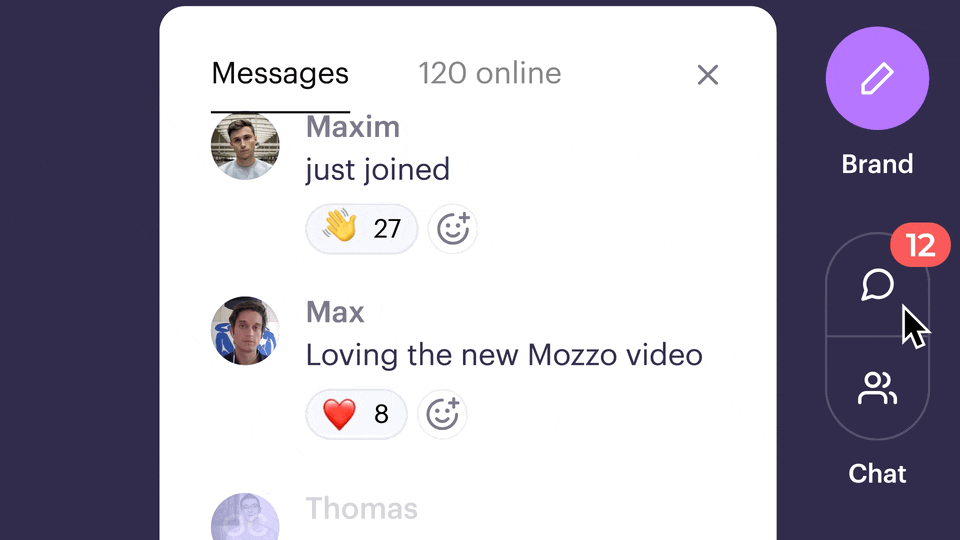
You can also upload all the content you're going to use to the webinar studio (slides, videos, etc.) and run through them with the guest speaker to make sure everything is ready for the live event. Polls and other assets can also usually be created ahead of time to avoid the stress of creating them during the live.
Pro tip: If you want to practice going live it's best to create a new test event, most webinar tools will start recording when you hit go live and this will turn your upcoming event into a replay.
7. Test your equipment
While you practice using the webinar tool, you can also test your webcam and mic. Make sure everyone's camera and microphone are being picked up, that there are no quality issues, and look into improving someone's setup if necessary.

Create a Modern Webinar Experience for your Viewers
Start for free with up to 30 registrants. No credit card needed.
Start for freeBest Practices to Make a Webinar Engaging
Running a webinar (as you've seen already throughout this article) is a lot of work. But if there are 2 aspects where you need to focus 80% of your energy on it's: creating good content & engaging your audience.
People will be lenient if you are stressed, if your internet goes out, or if you get a little lost in your presentation, but only if the underlying value of the webinar is there.
Make your event interactive
An easy way to engage your audience is to make your webinar interactive. You can do this through the chat, polls, Q&A, and other features. But this is also done in the way you choose to present the content — make sure to include the audience: ask for their opinion, feedback, and thoughts.
Don't make it too salesly
The underlying goal of most webinars is to sell a product or service. But if you spend 45 minutes or an hour selling your product it's just going to bore your audience. Instead focus on delivering valuable content, building trust with your audience, and solving their problems — your product will sell itself.
High quality video and audio
It's 2024 — 240p video and audio that sounds like you're 10,000 feet under the sea just won't cut it anymore. Your mobile phone has a powerful camera and if you have a new-ish version of any major laptop brands you also have a good enough microphone. If not — you can get a high quality one for <$100.
Act like a human being
Yes, a webinar is a professional content piece — but that doesn't mean you have to act like a robot (or an NPC). Smile, have fun, crack a joke, tell a personal anecdote... just be yourself! People buy from other people and humor, vulnerability, and sharing personal experiences are powerful relationship-builders.
Want to ensure you don't miss a single step? Get our complete webinar checklist that covers everything from planning to post-event follow-up.
Repurposing your Webinar to Increase ROI
You spent all this time creating and hosting this webinar, you can't just let it die after the live.
Webinar repurposing involves taking existing webinar content and adapting it for use in different contexts or platforms. You'll often see that it includes editing, reformatting, or repackaging the original video to suit the requirements or preferences of a new audience or platform.
Modern tools like Contrast use Ai to speed up the process of repurposing video content:
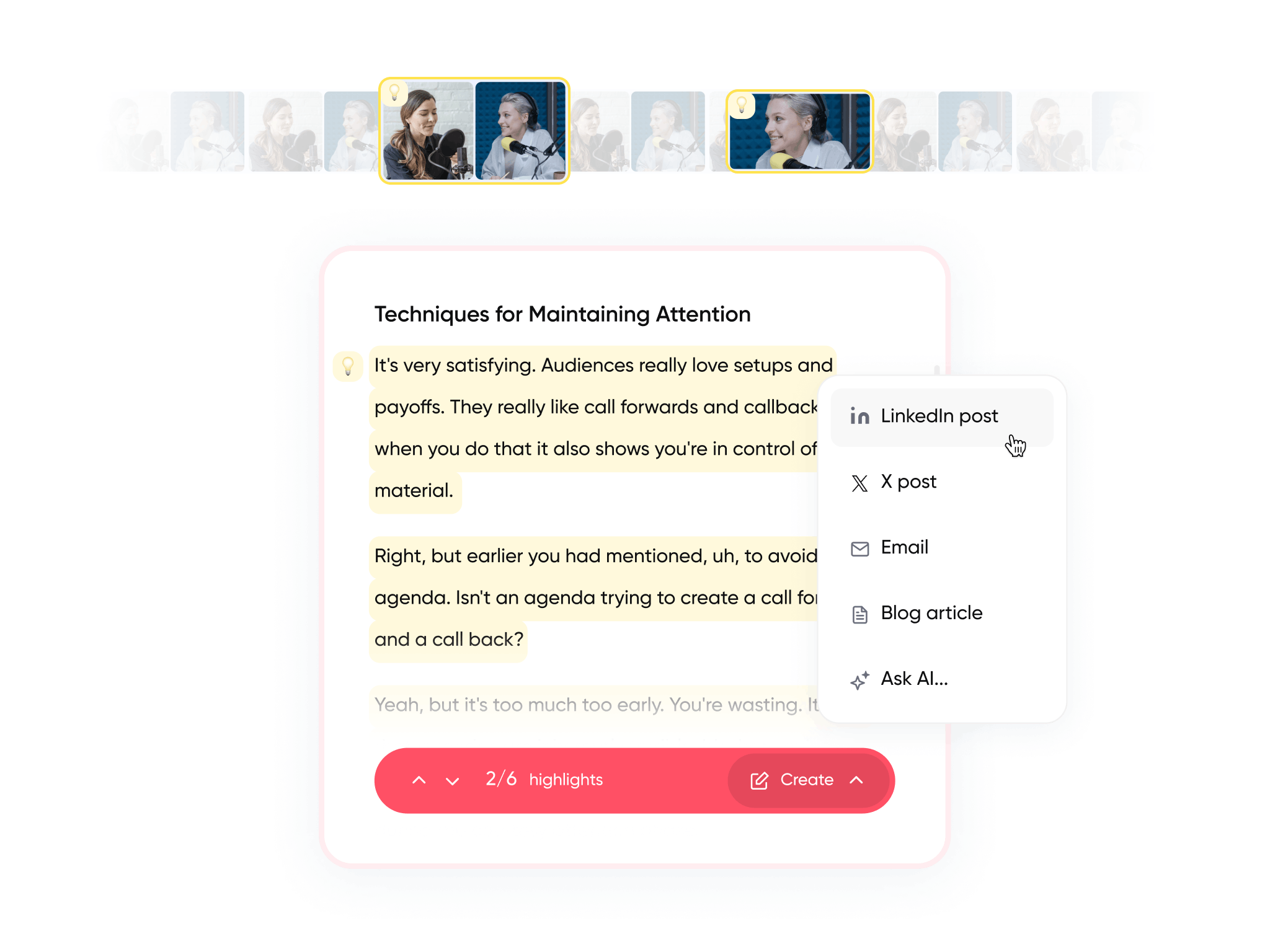
The first step of repurposing a webinar is to get the transcript. Then it can be fed into different AI tools to extract the main value and transform it into different formats. Sound complicated? It doesn't have to be.
Every time you run a webinar on Contrast you automatically get:
- Transcript of the webinar
- Easy repurposing into 5 different formats
- 5 suggested subtitled clips
- As many subtitled clips as you want
You can use this to keep driving people to watch your on-demand webinar, which will feel your sales & marketing team with a ton of data about your viewers, as well as helping you fill your content calendar in just a couple of clips.
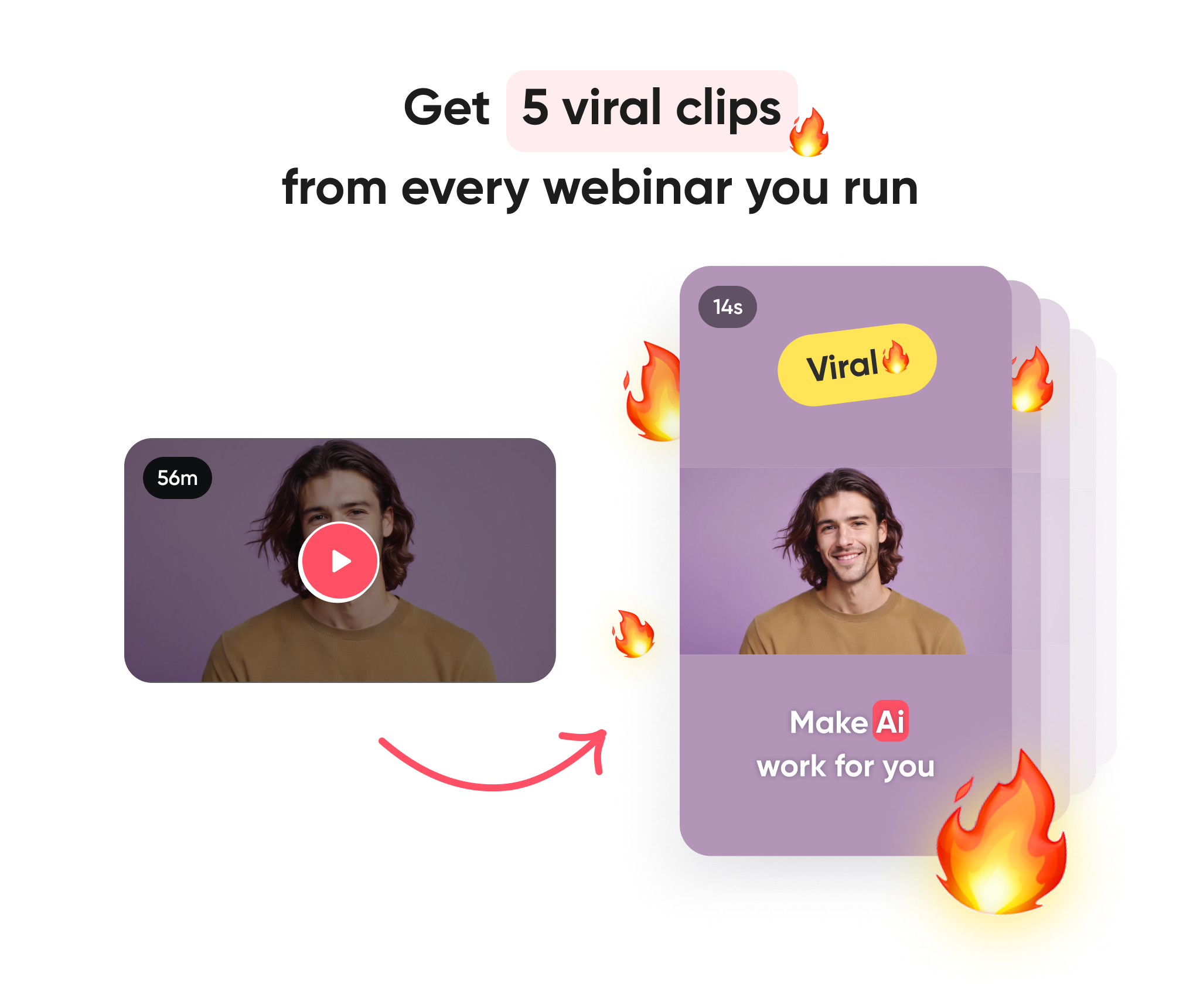
You can also consider embedding your webinar on your website once it's over so your website visitors can watch the webinar. Some webinar platforms will have features to make it easy to embed your webinar in just a couple of clicks.

Repurpose your Webinar Content in Minutes
Start for free with up to 50 registrants. No credit card needed.
Start for freeWhat Equipment do you Need for a Webinar?
Webinars are a very cost-effective marketing tactic because you can start running they with very little initial investment.
All you need to host a webinar is:
- Stable and high-speed internet connection
- Reliable and modern webinar platform
- A webcam or external camera (you can use your phone and Camo for a very high-quality camera you already own).
- A microphone (and ideally a headset to avoid any echo)
Make sure you're sitting in a room with good lighting and a nice background, and you're ready to run your webinar!
Pro tip: Want to improve your webinar setup? Look into improving your equipment in this order: Lights > Microphone > Camera.
Key Webinar Takeaways
Webinars are an amazing communication channel for businesses of any size — allowing them to reach infinitely large audiences while creating engaging and powerful experiences.
They can be of many different formats and serve different purposes but the fundamentals remain the same: identify who your target audience is, figure out what's bothering them or what they want to learn, and create high-quality, engaging content for them.
If you follow all the steps of this guide and follow the relevant links, we're sure you'll put on an amazing show for your audience.
Wondering where to start? Check out Contrast — whether your a webinar beginner or expert it offers all the tools you need to run a modern, high-quality, and engaging experience.

Create a Modern Webinar Experience for your Viewers
Start for free with up to 30 registrants. No credit card needed.
Start for freeFrequently Asked Questions
How to participate in a webinar?
As a viewers, participating in a webinar is as easy as first registering through the form on the registration page. You can then add the webinar to your calendar with the link to access the live. The day of the webinar, you can join the room (a few minutes early to make sure you don't miss anything) and when the host goes live, the webinar will begin.
Can they see you during a webinar?
Webinars are view-only for attendees, meaning attendees cannot see or hear each other, and the host cannot see or hear attendees either. The host can decide whether or not they want to be seen during the webinar.
Do you have to talk in a webinar?
Webinars are view-only meaning attendees can't talk during a webinar: they cannot be seen (or heard). However, they can participate by using the chat feature to communicate with other attendees or with the host/the speakers.
What is the best webinar platform?
Contrast helps you run your webinars in an easy to-use platform. With their webinar studio you create engaging live webinars that your audience will love. And Repurpose Ai helps you turn your webinar into a content goldmine.

Create a Modern Webinar Experience for your Viewers
Start for free with up to 30 registrants. No credit card needed.
Start for free